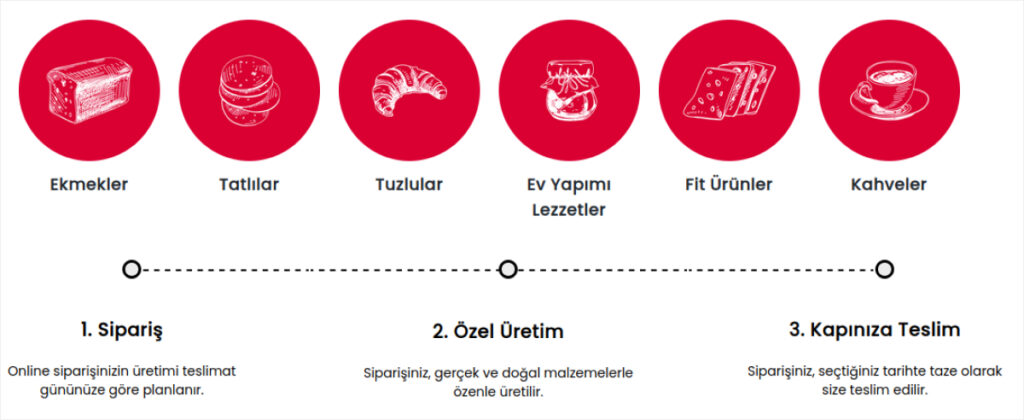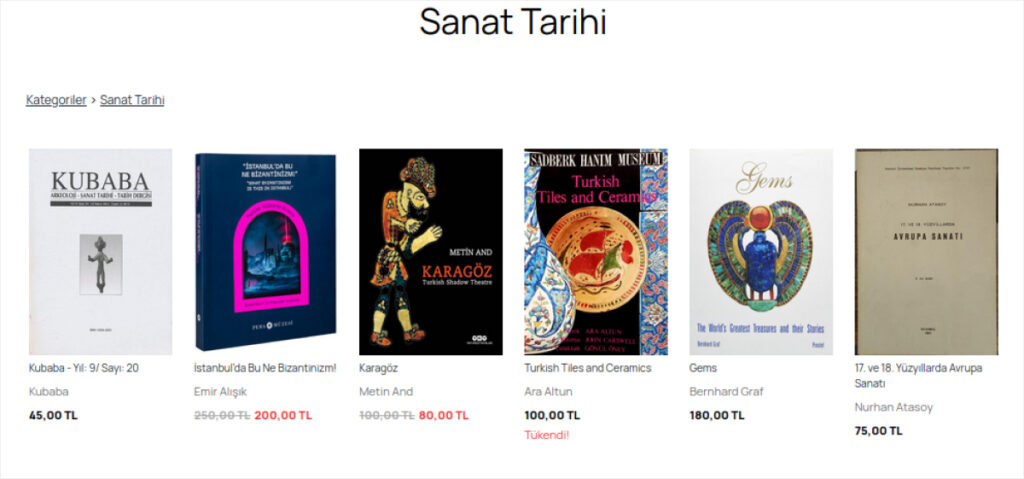To succeed as a store in the post-pandemic era, it’s essential to provide the right digital experiences. We’ll focus on developing your e-commerce website in this article, which is the early phase of building digital experiences. We’ll go through the essential features of a lean e-commerce website, which are useful not only for customers but also for website management.
Creating the right digital experiences can be thought of as a three-step process, as seen below:
- Visibility
- Interaction
- Conversion
Your online visibility will be at the top of the funnel. Regardless of the size of your business, the most popular and cost-effective strategy to gain a digital presence is to create an e-commerce website. Of course, there are various other methods for increasing your online visibility.
As a first step, you could build a profile on Google My Business and begin working on improving your shop’s visibility on maps. You may raise awareness of your products and brand among potential customers in your service region in this way. It’s possible to meet your customers via social and digital marketing.
You can think about what they do, read or watch on the internet -which is known as creating a basic empathy map- to get to know them a little bit better. Alternatively, you might have a chance to be noticed on marketplace sites if you provide content that is optimized for the platform you are working with.
The pandemic changed the retail industry in diverse manners, including speeding up the digital acceptance process. Customer spending on e-commerce is rapidly increasing.
The enhancements, time, effort, and financial investments that your e-commerce website will require in order to provide better digital experiences. They can be seen as both future preparations and actions that should have already been done. In either case, it’s not as difficult as you would believe to improve digital experiences and take action right away.
Because every effort in digital is measured and testable, it’s easy to achieve a consistent flow when you have the correct mindset.
As we discussed, the first stage is the website. Interaction is the second stage. Every connection between you and your potential clients is referred to as interaction. Whether or not it includes purchase behavior, ensuring that your interactions with potential customers provide them with the best possible digital experience should always be one of your top priorities.
Almost every performance-driven e-commerce website, regardless of industry, includes the same basic elements.
Because of the variances between businesses, it’s impossible to explain with a formula what a well-designed e-commerce website should look like. However, there are some essential qualities that any e-commerce website should have. Your e-commerce website should be responsive, effective, logical, and easy to manage, regardless of your items, brand, target audiences, or trends.
Navigation, products, marketing, and sales are the four categories in which an e-commerce website can be created.
Every business has unique characteristics that set it apart from its competitors. These characteristics should still be found in your online presence. Your e-commerce web site’s relationship with audiences determines the success of your digital experiences. To express fundamental characteristics, we can use these four categories.
When we talk about navigation, we’re talking about things like breadcrumbs, a user-friendly interface, and extensive search and filter functions.
High-quality zoomable product images, an easy-to-use product catalog, product pages that provide experiences similar to touching the goods in your hand, and descriptions and titles for both humans and search engine robots are all part of the product category.
Marketing features such as directions for product comments, special offers, and discounts for different segments are all important for social proof and interaction continuity.
A well-designed shopping cart, a secure environment, and a variety of shipping and payment alternatives are all essential components for the purchasing stage.
Here is a list of essential characteristics of a retail e-commerce website that seeks to provide excellent digital experiences.
Here Is A Checklist For Key E-commerce Features
Key Features For Security

- Do you have a secure socket layer (SSL) certificate?
- Is there a document that outlines the terms and conditions of use?
- Is there a document that outlines the company’s privacy policies?
Key Features For Header

- When you click on your logo, does it take you to the home page?
- Is your website’s navigation easy to use?
- Is it possible to switch languages if you’re providing more than one language?
- Did you include a wish list that users may access from the header section?
- Are your login and sign-up buttons in a visible and easy-to-find location?
- Is your physical store mentioned in the header if you have one?
- Have you made it easy for your users to find a store near them if you have many physical locations?
- Is it easy to get to the shopping cart?
- Is it notifiable by users who have items in their shopping cart?
- Is there a search box available?
- Are you given additional information that highlights your truthfulness, such as your phone number and address, that will help you acquire your clients’ trust?
Key Features For Body

- Are your campaigns and special offers clearly marked on your homepage?
- Are you keeping your potential clients up to date on topics like refunds and exchanges?
- Do you have any call to action (CTA) buttons? Are your users being directed to the end of the conversion process?
- Have you offered your visitors a cause to visit your site?
- Do you offer personalized results for a better experience to visitors who have already visited your site?
Key Features For Footer

- Do you have buttons that lead to key pages on your website? Do the essential pages like about us, frequently asked questions, and privacy policy all serve to convert leads?
- Have you provided the necessary contact information for your users who will want to reach you?
- Have you clearly shown the information your users need, such as your payment and delivery methods?
- Do you have social media icons?
- Is your sitemap accessible?
- Is there a help button for your users who might need help?
- Do you provide live chat support?
Key Features For Category Pages

- Is the purpose of the category explained clearly?
- Are the SEO efforts of the category done?
- Can your users sort and filter the products listed, and have enhancements been made to guarantee that they get exactly what they want?
- Do you have smaller versions of your product photographs than the ones on the product page? Are they clear and understandable?
Key Features For Product Pages

- Are your product images clear and understandable, are your images optimized for SEO, and are the image subtitles created?
- Are your product images of high quality enough to zoom in and examine all the details of the product? Has the necessary size reduction been done to increase boot speeds?
- Are all the information on your products that clearly express the situation that will occur when purchased, such as price, delivery, and taxes, available and visible?
- Is it possible to select the number of products?
Still, have questions? Ask tio for help!
*These are the screenshots from our digital partners’ websites.

